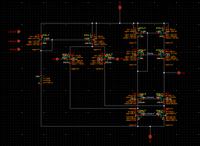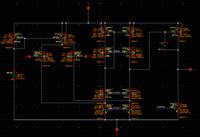viperpaki007
Full Member level 5

Hi,
I have made a simple folded cascode structure (Circuit diagram attached). All the transistors are working in saturation. However, i have a small problem. When i put the opamp in unity buffer configuration, the output voltage is at at higher dc-offset. I don't know how to make the dc-offsets and input and output equal. Can anybody help. Simulation results are attached.


I have made a simple folded cascode structure (Circuit diagram attached). All the transistors are working in saturation. However, i have a small problem. When i put the opamp in unity buffer configuration, the output voltage is at at higher dc-offset. I don't know how to make the dc-offsets and input and output equal. Can anybody help. Simulation results are attached.









